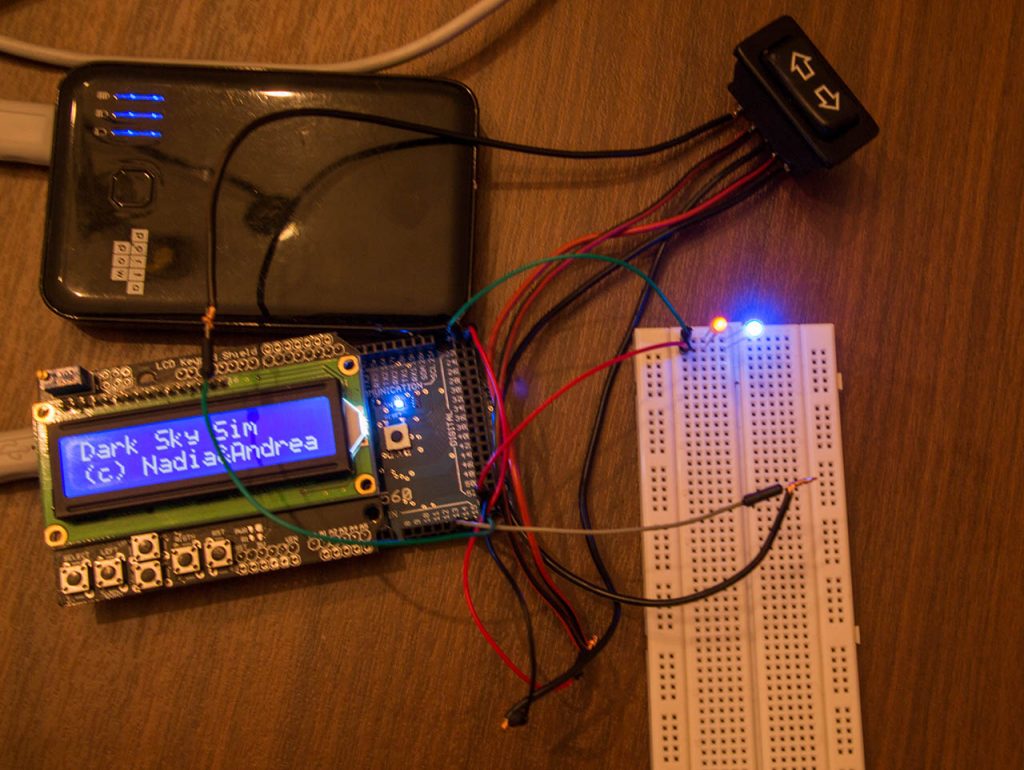Project DarkSkySim aims to design a physical simulator that will demonstrate the effects of light pollution on the starry sky and the difference that well-designed lighting can make. The simulator will consist of a LED-based board simulating the starry sky and several light fixtures varying from full-cutoff dark-sky friendly lights to completely unshielded lights. The board will simulate the night sky using LED’s of variable brightness, simulating stars of various magnitudes and constellation patterns. The board will be illuminated by the light fixtures and users can use buttons to switch between light fixtures as well as increase or decrease light intensity. This will create a first-hand experience for demonstrating the effect of light pollution as different light fixtures will have different effect on the number of stars visible.
Technical update:
The inner electronic parts of the simulator were concluded to be:
• A central system that performs the intelligent tasks based on an Arduino (Uno or MEGA) with an LCD screen for easy prototyping.
• A power control module based on an Arduino motor control shield that will drive the LED’s since the Arduino does not have sufficient power to drive them.
• A high power supply unit that will power the power control module. • A smaller power supply unit that will power the Arduino board.
• LED’s and switches. The system will operate having as an input a small power central supply that will be connected with Arduino, playing the role of controller, operating at voltages between 0-5V.
The controller will be operated by the user, using buttons to adjust the level of light pollution. Then the Arduino system runs a code sending the message to the power control about which voltage to output which will affect which of the stars will be observable or not. The LEDs operating condition is between 12 to 14 Volt but are dimmable by supplying a lower voltage. Various LED colors have been purchased which translates different color of stars (different temperatures).
The basic electronic operation and Arduino programming code have been achieved. The next step is the connection between the LEDs and the central system in an efficient way using wellorganized cables will permit a better outlook of the final board. Finally, the first drafts have been made concerning the exterior appearance of the board. It will be a plexiglass material on top of a wooden box. The LED’s will be placed in particular positions representing some of the well-known constellations. A small park with different lighting objects will be placed on the simulator board showing to the user at each pollution stage the good or bad object design.

